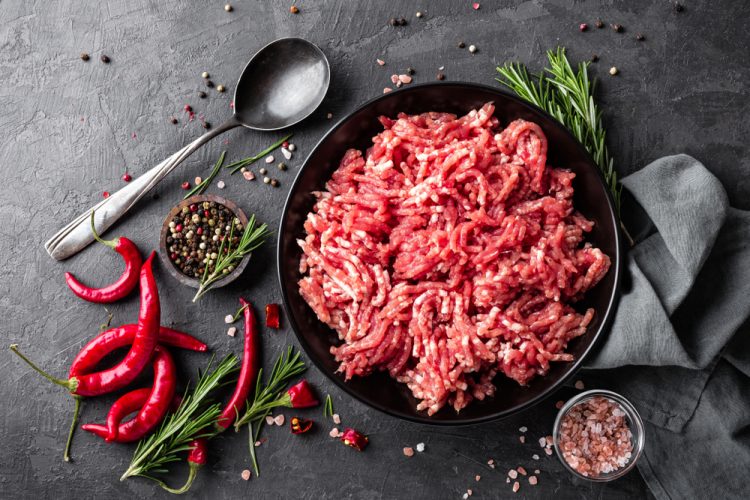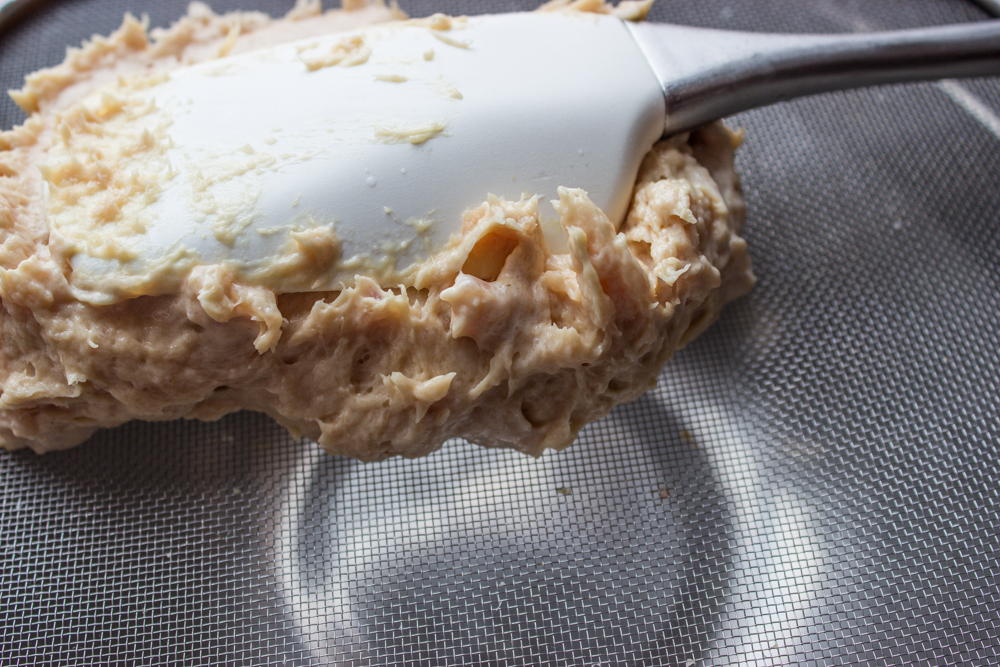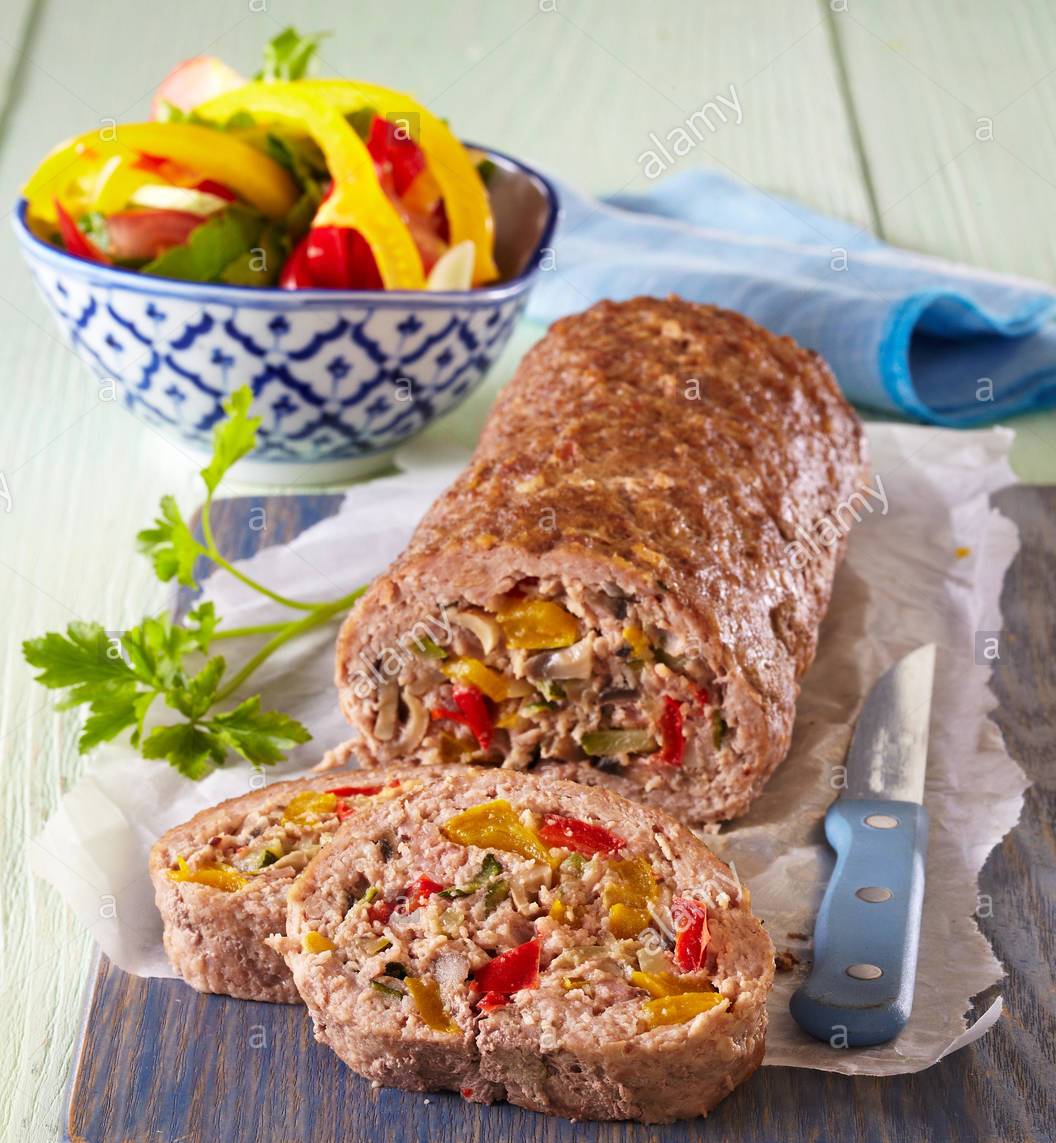Forcemeat -A Key Component of Charcuterie products.
Before we study about forcemeat it is very much important to know about the meaning & its importance of charcuterie
What is Charcuterie?
The word Charcuterie is pronounced “shahr-ku-tuh-ree” . Charcuterie is the art of preparing of various meat through the process of curing, grinding, cooking or smoking in order to not only preserve it but the delicatessen type of shops(Pork butcher shop) where these meats are generally sold.
Due to its vast meat preparation technique, it has been categories separately as a branch of cooking which involves preparing meat by curing process to make ham, sausage, bacon, confit, or other pork products. The charcuterie word originated in France and it means “pork-butcher shop.” Or Pork products but in todays modern days it is not only limited to pork products but also includes other meat, poultry or Non meat products such as duck, goose, chicken, cheese, toast, fruit etc.
Sausages and other charcuterie items are part of a culinary field known as garde manger, which concerns itself with the art of preparing and preserving foods using techniques as varied as pickling, smoking, salting or air-drying.
These speciality charcuterie meat are generally presented in the Charcuterie board which is a fancy display of these thinly sliced specialty meats, pâté selections and/or whole salami to slice. A charcuterie board will usually include a selection of these meats along with cheeses and extras such as nuts, fruits, spreads, mustards, jellies, crackers, breads, olives, pickles, etc. to complete the board.
A typical Example of Charcuterie board:-
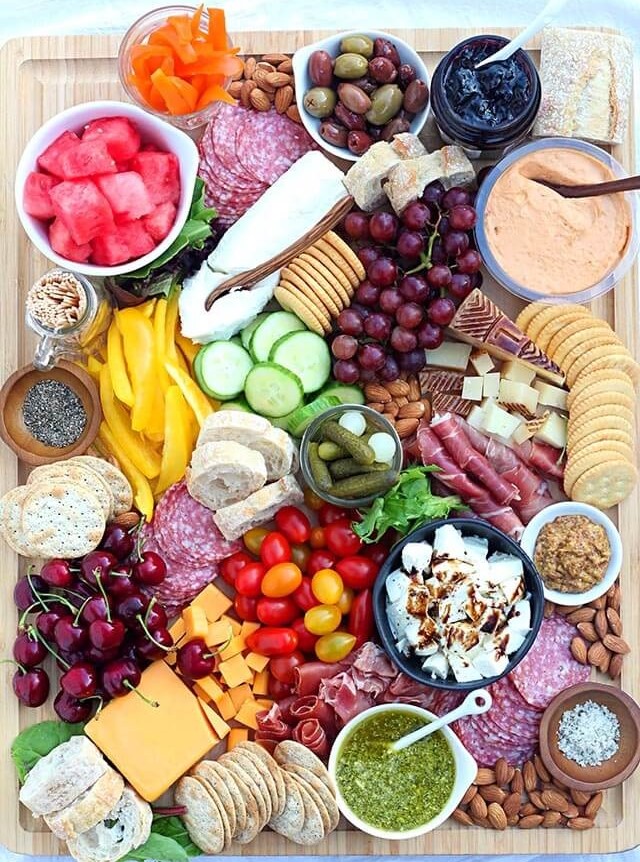
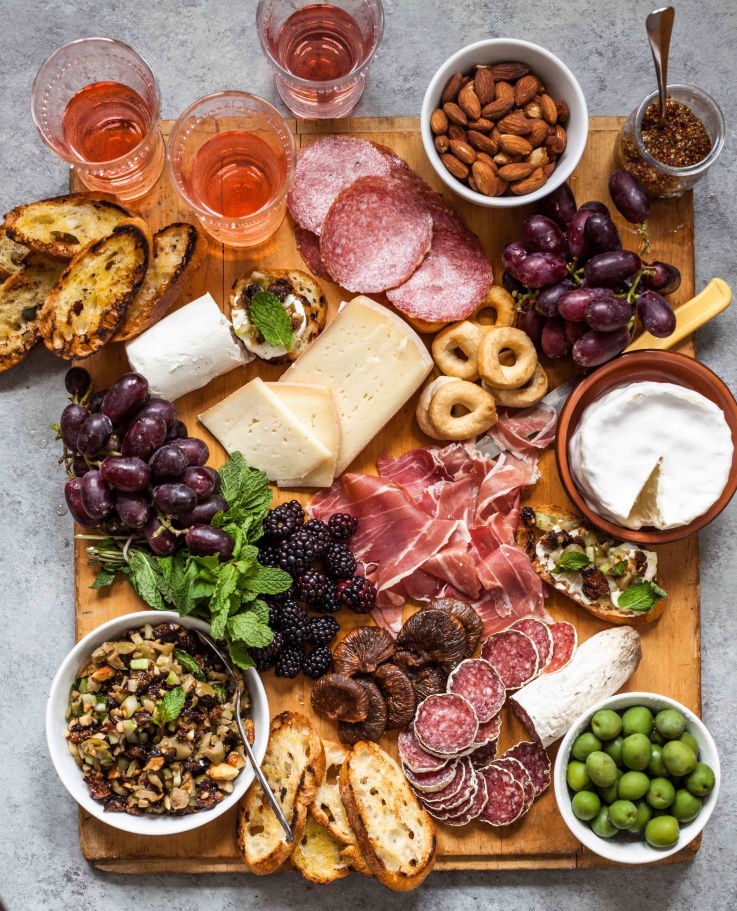
Pic source- Pinterest.
There are many charcuterie product such as Sausage, Pate, Terrines, Mousse, Ballantine, galantines etc which require forcemeat in making these speciality products which are usually a part of cold cuts preparation in the Larder branch of cooking.
Forcemeat: A Key Component of many Charcuterie products.
What is Forcemeat?
Forcemeats are finely ground uniform mixtures of raw meat such as Lamb, beef, pork, poultry, game meat or fish & seafood etc with other ingredients such as fats (Mainly pork fat due to neutral flavour), seasoning & flavouring that are blended together by process of grinding or mincing or pureeing to form an emulsions to combined with. Basically, it’s a filling mixture for the preparation of sausages, pate, terrines, mousse, galantines, roulades and many products etc.
The name forcemeat does not come from the force it takes to do this, but is merely an anglicization of the French word farce, which means stuffing.
Forcemeat is a type of seasoned, chopped or blended raw meat that is used as an ingredient for stuffing’s in the preparation of many appetizers and main dishes such as meatballs, pâtés, galantines, or terrines. Forcemeat should be in Uniform in texture and firm enough to be cut into individual slices. Forcemeat is often combined with spices or fruit or other ingredients and used to fill things like sausages, terrines, quenelles and roulades. Forcemeat is a way for chefs to showcase their skills, as well as continue learning and developing their craft.
Why the forcemeat are minced or grind?
Forcemeat are usually grinded or minced to expose more of its meat with other ingredients such as flavouring, preserving ingredients such as salt, sugar and sodium nitrite with all its seasoning contains it to impart a very balanced seasoned mixture.
The forcemeat must be processed in the meat grinder at least 3-4 times starting with a large grind, then to a medium, and finally to a fine grind. For making mousse or mousseline it is very important that after grinding the meat into a fine texture, it should be passed through a drum sieve which is known as a tamis to remove any excess gristle or sinew that may detract from the smoothness in the forcemeat.
For Example in Sausage-making process which always contains salt & other preservative ingredients in its mixture and it is then smoked or air-dried etc to deprive bacteria, air or water from it through a process known as osmosis making it to enhance shelf life.
Forcemeat comprises of the following:-
Meat as a Primary ingredient:-
The Meat are the primary ingredients in any forcemeat which include all type of Raw Red meat from Veal, pork,beef, lamb & mutton etc & Raw white meat such as from Poultr, game birds, Fish & Shellfish. This provides the dominant or main flavour in the preparation of forcemeat and many a time the name of dish is depends upon the type of meat used such as Chicken pate, pork sausage.
The Raw meat used for the preparation of forcemeat should be fresh and of prime quality. All bones, skin, sinews and gristle must be removed and the flesh cut up into ½” pieces for grinding. The dominant Raw meat normally accounts for minimum 40% of the meat component in any forcemeat preparation but the ratio can vary according to the type of forcement.
Basic Meat from either beef, veal, Lamb & Mutton, game, poultry, rabbit, duck, or even fish & shellfish etc.
Lean pork meat – Pork is often included in the forcemeats because pork has a neutral flavour that can easily take the flavour of the dominant meat. It also has high degree of water retention, which aids in the production of moist forcemeats. Pork is also cheaper than other meats Lean Pork which contributes to the bulk as well as the flavor.
It is very important to note that the Quality of raw meat is determine the quality of forcemeat. The body and structure of the product depends on the meat for the matrix of protein in which the fat particles of the forcemeats are suspended. The variation in the colouring of the force meats is the result of colouring properties of the dominant meat.
Fat/Role of Fat in Forcemeat
Fats mainly contributes flavour to the forcemeats and often act as a binding power and gives texture to the forcemeats. Pork fat is considered best as it is economical and cheap, has neutral flavour and has the ideal melting point in the production of the forcemeat. Another characteristic of Pork fat is that it is soft enough that easily melts in the mouth resulting it gives very good mouth feel.
Whereas Lamb or Mutton fat is hard & causes a greasy mouth feel and due to its strong flavour it is limited to few preparation of lamb product only. However, in case of Beef fat, it is also not very preferred fat due to its high melting point characteristic which stick in the mouth while eating it. Due to very low melting point & very strong flavour of Chicken fat , it is also not very preferable.
Pic source-Alamy
Binding Ingredient in Forcemeat.
Although pork fat acts as a binding agent in forcemeat but it is not sufficient to give proper binding therefore we have to add some additional binding ingredients while making a perfect forcemeat for example – Eggs, gelatin, aspic, bread crumb, cheese, flour mixture or starchy ingredients, panada etc.
To maintain the proper taste and texture, it is highly recommended to use a maximum ratio of 4 parts meat to 1 part binding agents by weight. It depends upon the type of binding agents used in the forcemeat..
Seasoning & Flavouring
Salt is not only used as a seasoning in the forcemeat but also act as a preservative agent. Curing salt is usually added in the preparation of forcemeat which comprises of 94% Table salt (sodium chloride/NACL) and 6 %sodium nitrate(NaNO2 ). it has a dual role and that is to fix the processed meat’s colour and inhibit the growth of bacteria. Spices are normally responsible for the distinctive flavour characteristics of the various forcemeats.
Salt, the world’s oldest preservative, is, therefore, one of the main tools in charcuterie. Salt draws moisture out of foods, which makes it more difficult for bacteria to thrive, and it also draws water out of the bacteria themselves, which kills them. (It is recommended that 20 gms of Curing salt should be used in 01 kg of forcemeat.)
Other flavouring & seasoning includes aromatic vegetables, Herbs & Spices, wine & vinegar, sauces like tobacco & Worcester sauce etc to enhance the flavour and season the forcemeat.
Confit is another charcuterie technique that involves preserving meats in their own fat. The layer of fat seals off the oxygen from the food, and without oxygen, bacteria can’t survive.
Additives like MSG, Sodium Erythorbate, BHT and BHA, Salt Petre etc helps to enhance the color, increase shelf life, contribute to the taste and flavor and prevent/delay the fat from going rancid.
Richness can also be added in the forcemeat sometimes it is also known as garnishes in the forcemeat which are usually contains Nuts, Foie-gras, truffles, olives, pimentos etc. This gives a very pleasing color and also contributes the richness in the forcemeat in the preparation of sausage, pate & terrines, mousse or mousselines etc.
forcemeat preparation style:-
There are 4 common styles of preparation of forcemeats: Each can be produced easily if you have the proper equipment.
- country-style forcemeat,
- Straight forcemeat,
- Mousseline.
- Gratin style forcemeat
What is country-style forcemeat:-
It is the simplest of the forcemeats to prepare and yields the heartiest and most distinctive pates and sausages. This style of forcemeat is also known as champagne style of forcemeat in France. The country style forcemeat will be denser and coarser in texture because it is not grinded to a fine texture. It is usually finally chopped or pounded.
Ideal Ration of Lean meat & Pork fat in Country style force meat are-
- Lean Meat- 01 kg
- Pork fat- 50 % to 70% of Lean meat
- Binding agent-10-20% of total weight of forcemeat.
- Flavouring & seasoning – 10-15 % of total weight
Country style forcemeat is usually mixed with a combination of coarsely ground meat and a smooth ground meat so that chunks of meat are visible in the mass of the mixture.
Pic source-alamy
country-style forcemeat is usually marinated and seasoned prior to grinding. Sometimes liver is also added. A traditional country-style forcemeat is heavily seasoned with onions, garlic, pepper, juniper berries, bay leaves etc.It is the simplest of the forcemeats to prepare and yields the heartiest and most distinctive pates and sausages. In country style preparation of forcemeat, it can combines lean meat with liver and fat or fatback to add a distinctive flavor. In preparation, the liver is most often forced through a sieve to remove the membrane, sinew or fiber within the meat.
Country style forcemeat is usually have a panada as a binding agent.
Straight style forcemeat:-
It is properly the most versatile of all the forcemeats and is Smoother and more refined than a country-style forcemeat. Straight force meat contains equal part of Lean dominant meat with equal part of Lean pork meat with pork fat through a process of progressive grinding and emulsification. While making straight type forcemeat it is important to seasoned the meat very well, but the seasonings should not mask the dominant meat flavor. Eggs may be used to give better binding of the forcemeat. However heavy cream can also be used to give smooth texture & rich flavour. The common flavors used are shallots , wine, brandy and all spice.
Ideal Ration in straight style force meat are-
- Lean Meat- 01 kg
- Pork fat- 50 % of lean meat
- Lean Pork meat- 50% of lean meat
- Binding agent-10% of total weight of forcemeat.
- Flavouring & seasoning – 5-10 % of total weight
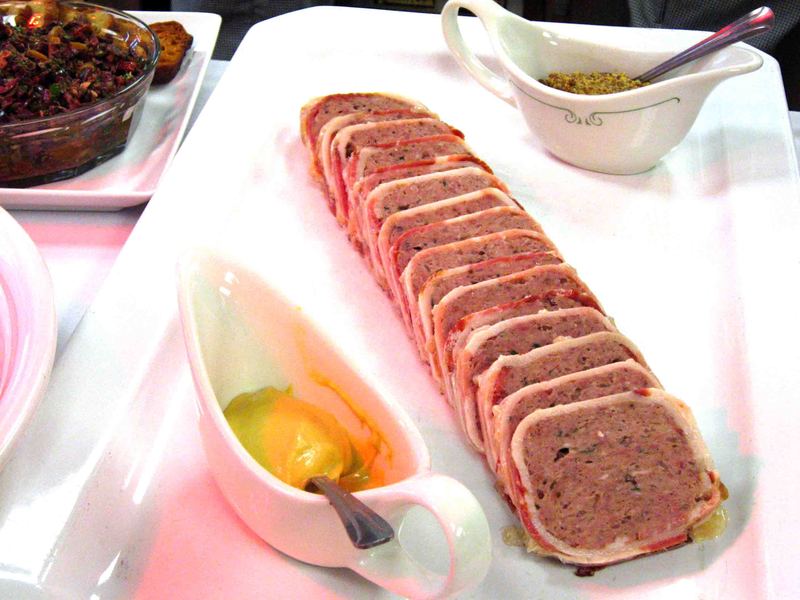
Picture source-theculinarycook
A basic forcemeat is made by grinding the meat and fat separately — the meat twice and the fat once. The fat is worked into the meat by hand or with a food processor or chopper. A quicker method involves grinding the fat and meat together and blending them in a food processor. Whichever method you use, some recipes call for the incorporation of crushed ice to minimize friction, reduce temperatures and to add some moisture.
Straight forcemeat are generally used to prepare Pates-en-croute, Terrines and galantines.
Mousseline style forcemeat:-
Mousseline forcemeat is the lightest of all types of forcemeat. It is delicate flavoured and finer than the straight style forcemeat and usually made with heavy cream rather than the pork fat. It is most often made with fish or shellfish but you can sometimes use veal, pork, feathered game or poultry and always emulsified with cream and egg white.
Mousseline forcemeats are typically forced through a sieve to produce a very fine consistency and is used to make fish & shellfish sausages and a variety of timbales and terrines, quenelles & ravioli fillings etc. it can be served hot or cold
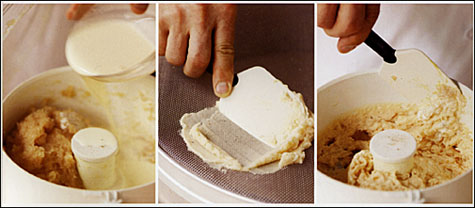
Point to remember while making Mousseline style forcemeat-
A mousseline forcemeat should be prepared by processing ground meats and cream in a food processor. Egg whites should be added to lighten and enrich the mixture. The ratio of fish to eggs to cream is very important — too many egg whites and the mousseline will be rubbery. Too few and it may not bind together. If too much cream is added, the mousseline will be too soft or will fall apart during cooking.
Gratin style forcemeat:-
Gratin forcemeat is made by partially cooking some of the meat to develop good flavour and color and then grinding or pureeing the forecemeat. Usually chicken or poultry liver are commonly used along with eggs and panada as a binding agent in this forcemeat mixture. In gratin forcemeat, the meat is very quickly seared just enough to enchance flavour and color.
Point to remember while making forcemeat:-
- Keep all surfaces clean and sanitized while making forcemeat.
- Use lean meats in preparation of forcemeat. The meat should be well trimmed of excess connective tissue. Keep all meat cold and temperature should not be increased more than 5 °C, as the pork fats firm and will provide a smoother texture. If the forcemeat gets too warm the product will take on a loose structure and have a greasy appearance that will affect its overall quality.
- Cure or marinade the meats to add flavor and infuse seasoning
- Partially freeze the ingredients before grinding
- If require, add ice to the meats when grinding to chill the mixture and add moisture to the forcemeat.
- Use progressive grinding to achieve a fine puree
- Sieve forcemeat to remove connective tissue, sinews and gristle etc from forcemeat mixture.
- Balance main components with seasoning, aromatics and wine or spirits that will accent and highlight the natural flavors
- Since forcemeats are commonly used in cold meat preparation such as pates, terrines and galantines etc therefore it should always be seasoned up well.
- Forcemeats should be tested for taste and texture before assembly and cooking. To test, prepare a quenelle and poach in salted water or stock. Evaluate the seasoning and adjust as needed.


